Oxendon Up Tunnel
Oxendon Up Tunnel

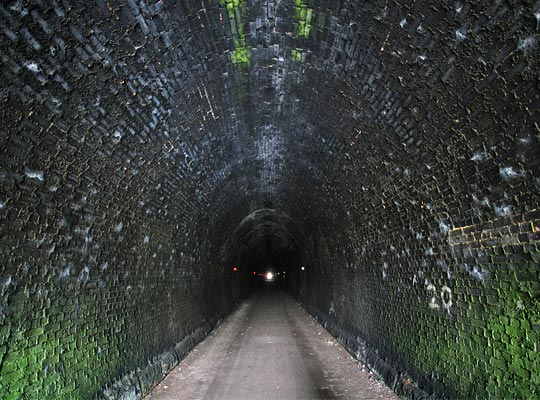
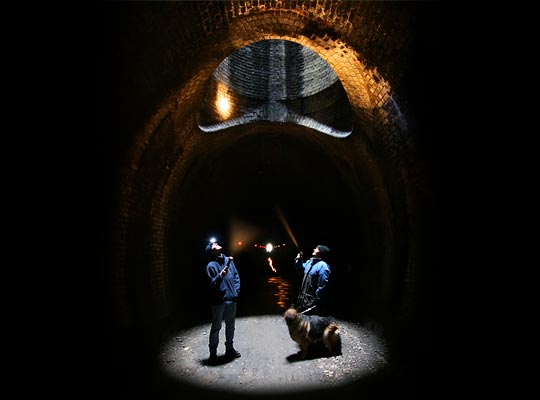
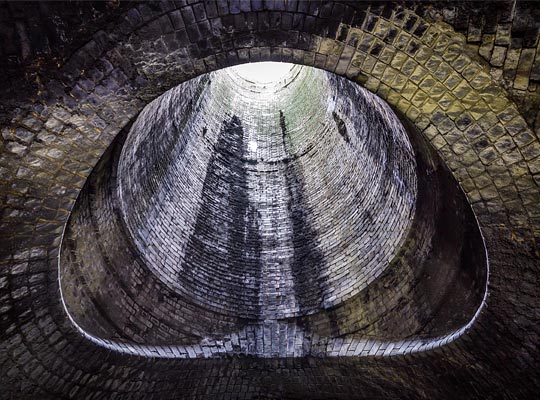
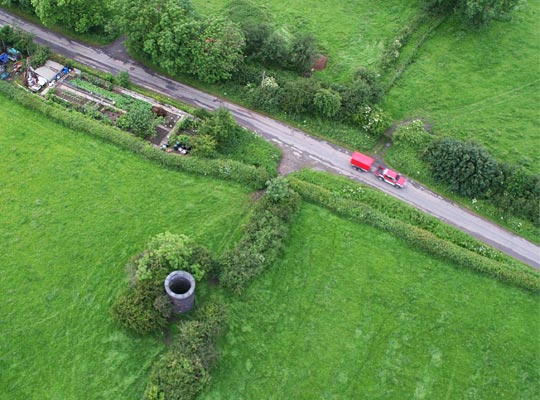
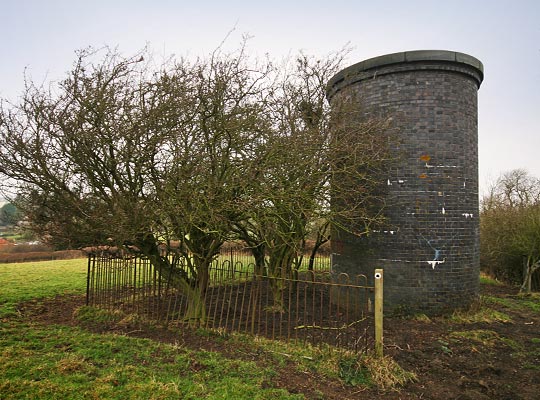
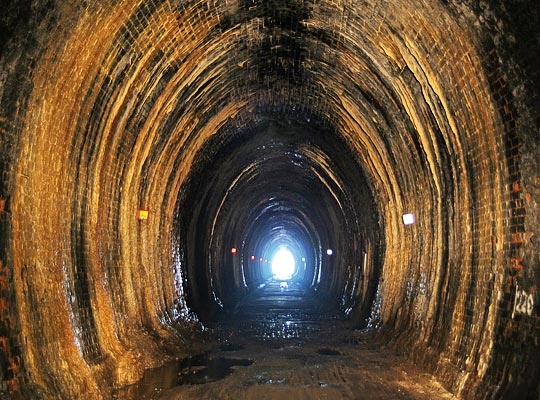
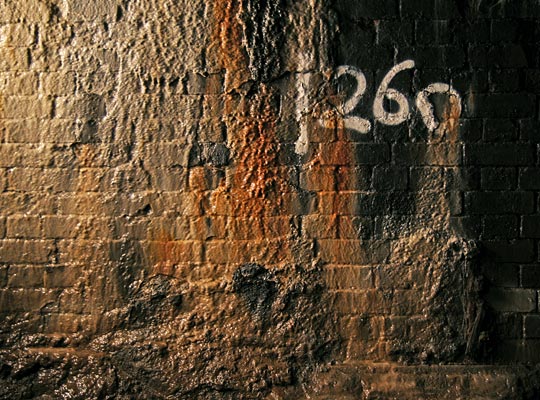
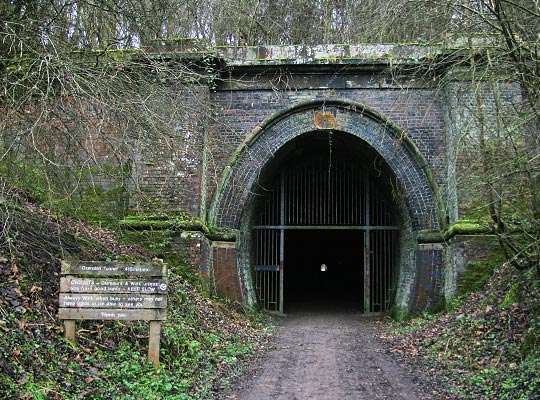
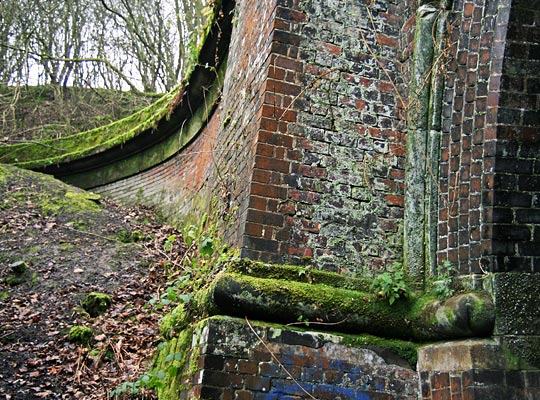










In the early 1850s, the London & North Western Railway promoted a line linking Northampton with Market Harborough, the intention being to capitalise on the huge amounts of ironstone found in the area. The route was engineered by George R Stephenson, nephew of his famous namesake, and George Parker Bidder. Work got underway in 1856, with Richard Dunkley of Blisworth awarded the contract to build it. 16th February 1859 brought its official opening.
The single line was forced to penetrate hills at Kelmarsh and Great Oxendon. The latter tunnel required lengthy approach cuttings and was driven through the blue shaly clays of the Upper Lias, with occasional hard beds full of Ammonites. At the north end, which is lower than the south, a few feet of sandy shales underly the clay.
Due to increasing traffic levels, the line was doubled in 1879, demanding second bores to be constructed on the east side of the originals, used for Up trains.
Each pair of bores share combined portals at both ends. These are imposing and architecturally attractive structures, built mostly in brick. Notable features are the substantial buttresses either side of the entrances and curved wing walls. The detailing is stone, including the parapet, associated string course and oversail around the arch ring face that protects it from water penetration. Above the parapets are lengthy drainage channels, also brick-built. The bores themselves are horseshoe-shaped in profile and in generally fair condition.
In the 453-yard Up tunnel, the ballast has been removed to provide a more comfortable surface for users of the 14-mile Brampton Valley Way footpath which opened in spring 1993. No lighting is provided, although this bore is straight and reflective plates have been attached to the sidewalls to help guide walkers towards the exit. There is also a central shaft which throws a puddle of light onto the solum. At the surface, the brick protection wall is located in a field just to the south of Braybrook Road.
The refuges in this bore have been bricked-up to prevent members of the public lurking in them. There is some pooling, particularly north of the shaft where a couple of calcite accumulations are apparent.
Next door, Oxendon Down tunnel – 462 yards long – is dry through its southern section but running water entering at two locations beyond the midpoint result in the northern part being wet – though not excessively so – thanks to the falling gradient. Accompanying this ingress are striking and extensive calcite deposits. Extant railway ballast helps with drainage.
The alignment follows a gentle curve of around 80 chains radius throughout. However, not far from the south end, a distinct kink is apparent whereby the tunnel goes off-line to the west before shifting around two feet to the east. This irregularity and a lesser one towards the north end – presumably caused by setting-out errors – contributed to the tunnels’ notoriously restricted clearances, measuring as little as 10cm in places.
At various locations, including through the kink, strips of brickwork have been replaced at the haunch – mostly on the Up side – and are now stepped along both longitudinal edges. Elsewhere the lining has suffered some spalling, with patch repairs carried out.
The refuges are tall but narrow, and all located on the inside of the curve; due to the lining’s profile, they are much deeper at their base than at the top. Along the opposite wall run two rows of cable hooks.
Although freight continued to run, passenger traffic was originally withdrawn from the route on 4th January 1960. However through services were restored for four months in the early part of 1969, and between July 1972 and August 1973. But the line was allowed to decline, with poor track conditions resulting in speed restrictions as low as 15mph; the linespeed generally was 45mph. It finally succumbed to closure on 16th August 1981, with a return charter special running the previous day.
Click on this icon for a gallery of Oxenden Down Tunnel pictures.
Click on this icon for a gallery of Kelmarsh Tunnel pictures.
Click on this icon for a gallery of infrared pictures.








